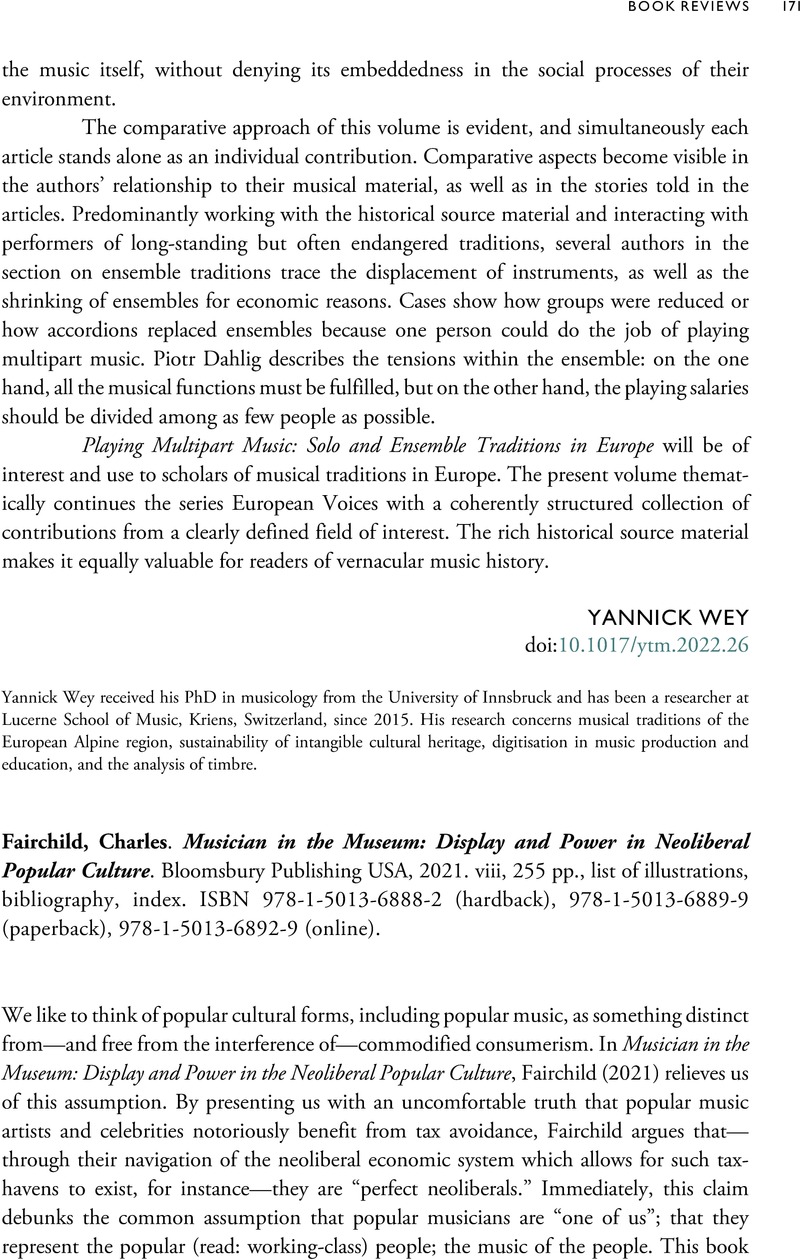No CrossRef data available.
Article contents
Charles Fairchild. Musician in the Museum: Display and Power in Neoliberal Popular Culture. Bloomsbury Publishing USA, 2021. viii, 255 pp., list of illustrations, bibliography, index. ISBN 978-1-5013-6888-2 (hardback), 978-1-5013-6889-9 (paperback), 978-1-5013-6892-9 (online).
Review products
Charles Fairchild. Musician in the Museum: Display and Power in Neoliberal Popular Culture. Bloomsbury Publishing USA, 2021. viii, 255 pp., list of illustrations, bibliography, index. ISBN 978-1-5013-6888-2 (hardback), 978-1-5013-6889-9 (paperback), 978-1-5013-6892-9 (online).
Published online by Cambridge University Press: 08 February 2023
Abstract
An abstract is not available for this content so a preview has been provided. Please use the Get access link above for information on how to access this content.

- Type
- Book Reviews
- Information
- Copyright
- © International Council for Traditional Music 2023


